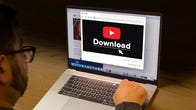YouTube‘s new CEO, Neal Mohan, outlined the 2023 priorities for Google’s massive video service in a letter Wednesday, calling out how he wants to explore the creative opportunities of generative artificial intelligence while setting “thoughtful guardrails” for it.
“The power of AI is just beginning to emerge in ways that will reinvent video and make the seemingly impossible possible,” Mohan wrote in the letter, adding that the company is “taking the time” to develop these AI features with safeguards in place. “Stay tuned in the coming months as we roll out tools for creators as well as the protections to embrace this technology responsibly.”
This kind of annual letter of priorities was a tradition of Mohan’s predecessor and mentor, Susan Wojcicki, who announced she was stepping down as YouTube’s CEO about two weeks earlier.
“As we think through our product roadmap, we’re not just planning for the next few years. This is a critical moment in the creation of digital video, and we’re imagining what the future of creation will look like,” Mohan wrote. He said he’s aiming to give creators more formats for creativity and additional ways to make money.
Among the new stats noted in the letter, Mohan pointed out:
- YouTube has captioned more than 6 billion videos.
- More than 1 billion viewers daily are watching videos with captions enabled.
- YouTube generated 2 billion views of gaming-related content last year.
- 6 million viewers paid for YouTube channel memberships in December, a 20% increase from a year earlier.
Mohan also said that Shorts, YouTube’s TikTok rival, would roll out a creation tool this year that lets you record a side-by-side with both Shorts and regular YouTube videos to share reactions. He reiterated that Shorts are averaging 50 billion daily views and said that the number of YouTube channels that uploaded Shorts daily grew 80% last year. (Last year was also the first full year that the Shorts format was available globally.)
He called out TVs as a continuing area of growth, as well as a newer focus on podcasts, such as a plan to integrate RSS to give podcasters another way to upload their shows to YouTube and to let podcast listeners have another listening option.
On Wednesday, Mohan noted in his letter that YouTube would continue to push its stance to policymakers, including debates related to possible changes to Section 230 of the Communications Decency Act in the US, European proposals that may limit political speech and Bill C-11 in Canada.
Editors’ note: CNET is using an AI engine to create some personal finance explainers that are edited and fact-checked by our editors. For more, see this post.

